When a regular drinker is denied a taste of cherries at his favorite pub, he decides to stop drinking so that he can… wait for it… buy his own cherries. A movie adaptation of a popular temperance tale.
Home Media Availability: Released on DVD.
Sour cherries
In the first decade of projected film, there were actualities that showed the world as it was, there were fantasies that used top quality special effects to take audiences deep into imagined worlds and there were crime pictures that had morality crusaders up in arms. However, there were also silent films that were meant to inform and reform.
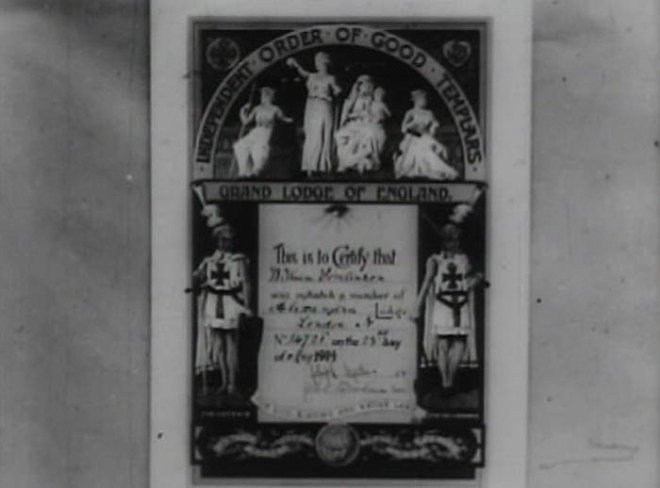
Buy Your Own Cherries! tapped into the powerful temperance movement that was enjoying great mainstream success at the time. The idea that alcohol was the root of all of society’s evils was being pushed by religious figures, politicians and politically-minded civilians alike. It was natural that the subject would be used for entertainment as well.
This 1904 film from British pioneer R.W. Paul opens with a workman walking into a pub. When he tries to help himself to a few of the cherries on the bar, the landlady huffily tells him to “Buy your own cherries!” The workman returns to his shabby home, slaps his wife around and his shocked to discover that his own children are afraid of him.
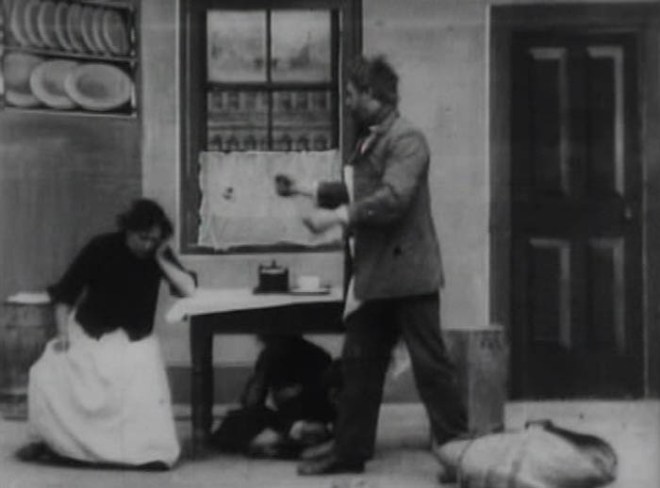
Having reached a turning point, runs into a temperance reformer and signs a pledge to abstain from alcohol. Now that he is not spending his money on drink, he finds he can buy his own cherries and other treats besides, which he eats with great relish in front of the pub’s landlady. His family is suddenly transformed into a happy little group, the house is filled with middle class luxuries and they all live happily ever after.
A nice lesson learned in five minutes of a split-reel and that’s that.

In Film Editing: History, Theory and Practice, author Don Fairservice discusses Buy Your Own Cherries!’ flowing, smooth editing and the way the filmmaker managed to weave a comparatively elaborate narrative but points out that the picture does not differentiate between five minutes or five weeks passing between scenes.
This is true but it is important to remember where we are in the history of motion pictures. At the time, a great many films were still shorthand for famous pop culture properties that everyone would be expected to recognize. If you show a farmer kid blowing up a space station and then immediately cut to a big guy in a cape declaring that he is the kid’s father, you don’t need to reenact the entirety of The Empire Strikes Back in order for the audience to understand what the scene is tapping into.

The likelihood of a 1904 audience having never heard of Buy Your Own Cherries! was as small as a modern audience completely missing the significance of a remarkably obvious Star Wars reference. (It’s worth noting that while early twentieth century Prohibition itself was not universal—the United States, Iceland, Finland, Norway and, briefly, Canada were among the outliers at the time— the temperance movement was international and influential, as were the tracts, stories, novels and plays related to temperance. And, obviously, we are not even touching on countries that banned or currently ban alcohol for reasons unrelated to the North American/European temperance movement of the nineteenth century.)
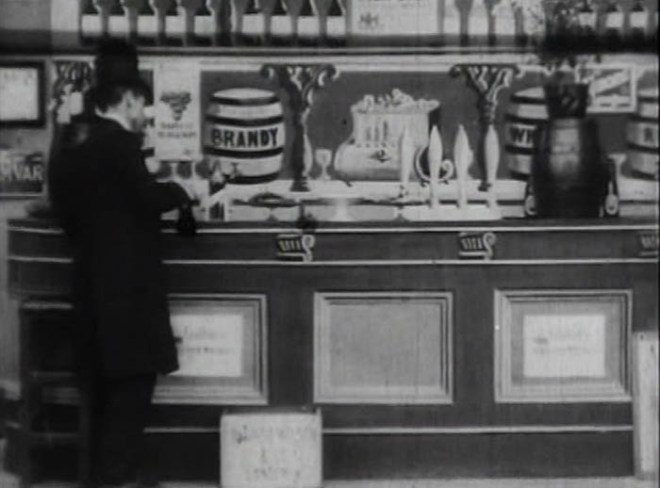
Buy Your Own Cherries! was a well-liked temperance tale of the 1860s written by anti-liquor activist John William Kirton and the reasons for its continued popularity are obvious. While there is no doubt about the sympathies of the author, the story is neither particularly scolding nor preachy. John Lewis is presented as a nice enough fellow, no drunk by any means. He simply doesn’t realize how a few pints with the boys add up and bite into the family budget.
(You can read a public domain copy for free here.)
The tale ignores the class system of the time with its rather rosy ending with middle class success bestowed upon working class hero but it’s not so far out of the bounds of reason as to be completely ridiculous. And it was aimed squarely at men belonging to average household, significant since the temperance movement was deeply tied to feminism. It does not scold; this was for casual tipplers, not raging alcoholics.
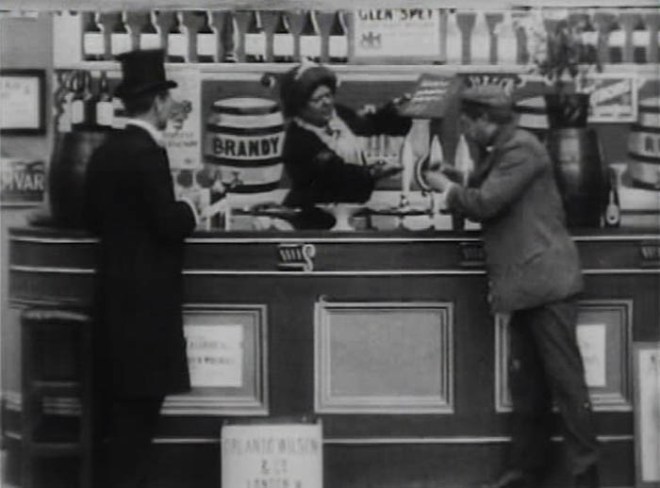
The message is appealing: You’re a nice enough fellow too, just sign the pledge and you can bootstrap yourself right into comfort and prosperity. It’s not really so different from modern articles that claim kicking a Starbucks habit can save thousands a year. The low stakes of the story are part of its charm. Compare Ten Nights in a Bar Room, which resorts to killing off small children in order to produce pathos and melodrama. Buy Your Own Cherries! is a model of restraint.
Adapting such a story to the screen would have obvious appeal. And Buy Your Own Cherries! was adapted to the screen. In fact, it was on the screen before there were movies. Slideshows using transparent plates had been popular for centuries but the reached new levels of popularity in the nineteenth century. The glass plates were often beautifully painted or even animated and they were presented with a showman’s flair.

Buy Your Own Cherries! was released as a slide collection multiple times. An 1885 catalog offers a seven-slide set for seven shillings, colored sets at double the price. A far more elaborate photographic slide collection released in 1905, a year after the R.W. Paul film, features elaborate color and dozens of individual slides with actors playing the roles of John Lewis and his family.

Edition Filmmuseum released a reproduction of the 1905 slideshow alongside the 1904 film and this apples to apples comparison shows that a magic lantern presentation could easily give films of the day a run for their money. It lasts a whopping 28 minutes with lively narration and a constant change of slides. The scenes are set up imaginatively and the whole thing is quite charming and entertaining for the entire runtime.
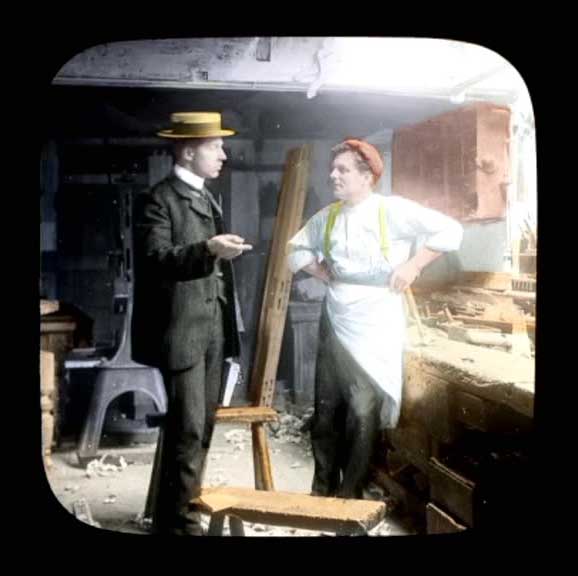
It’s important to realize that these presentations were interesting and entertaining because sometimes I run into people who think that old movies could be sloppy and dull because there was nothing else to watch back in the day. Nothing could be further from the truth. Potential moviegoers of the 1890s and 1900s could spend their money on slideshows, music halls, concerts and even multimedia presentations with slides, performers and movie clips. Motion pictures were forced to up the ante and keep up with these entertainments with their own hand-color and spectacle.

In the case of Buy Your Own Cherries!, the movies have been bested by the slides. As is often the case in movies even today, the characteristics of the story are exaggerated and punched up to add spice. While the John Lewis of the story is a hands-off husband and father who spends a lot of time at the bar with his pals, the movie John Lewis is presented as violent and presumably an alcoholic. Rather than attending temperance meetings after resolving to give up drink in his own heart, he is converted by the outside influence of a reformer. This makes the cherries less essential to the story, they were not the catalyst for his reformation. Seeing his terrified children and meeting the reformer were what did the trick. And so the simple charm of the original narrative is lost.

That’s not to say the film is without its pluses. The editing is indeed simple and easy to follow. The scenery is painted, as was typical in films of this period, but there’s a nice bit of business where John Lewis buys cherries in front of the pub and then walks toward the camera while eating them, which lends immediacy and depth to an otherwise static scene.
Also, even in its more exaggerated cinematic form, Buy Your Own Cherries! is positively restrained when compared to temperance slideshows like Enter Not the Dramshop, an 1890 magic lantern presentation complete with graphic medical diagrams of an alcoholic’s stomach. Readers of a certain age will surely have flashbacks to grade school D.A.R.E. meetings and “This is your brain on drugs” commercials.

In general, though, Buy Your Own Cherries! is not quite as interesting as R.W. Paul’s other work and it’s certainly not as entertaining as the slideshow that would have been its rival during its initial release. Still, it’s an interesting watch for anyone who is studying the history of social issues in motion pictures.
Where can I see it?
Buy Your Own Cherries! was released as part of The Movies Begin box set but I like the version found in the Screening the Poor region 0 DVD set from Edition Filmmuseum with a fine score by Günter A. Buchwald. You get the movie, the 1905 magic lantern slideshow narrated in English, as well as numerous other silent social films and lantern shows, including Enter Not the Dramshop. Extremely illuminating (ha ha) and an important reminder of the context of early silent films. A highly recommended release.
☙❦❧
Like what you’re reading? Please consider sponsoring me on Patreon. All patrons will get early previews of upcoming features, exclusive polls and other goodies.
Disclosure: Some links included in this post may be affiliate links to products sold by Amazon and as an Amazon Associate I earn from qualifying purchases.
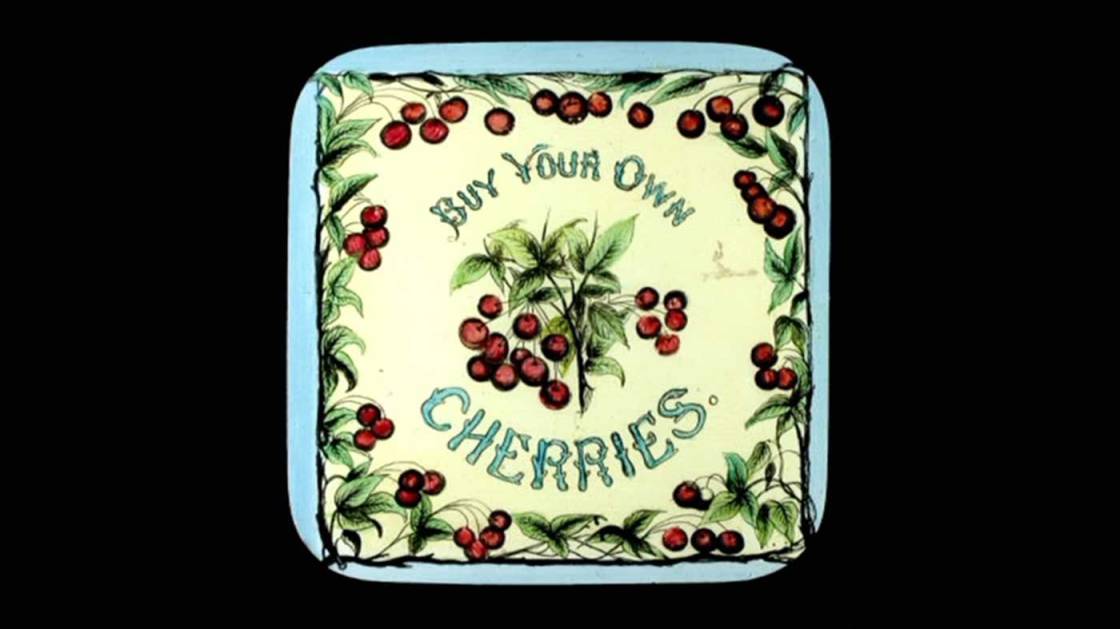
My Italian grandfather, who did not support Prohibition, would fill jars with cherries and brandy and let the mixture stand for some time. When I tried one of the cherries, it gave me quite a jolt.
I can imagine!